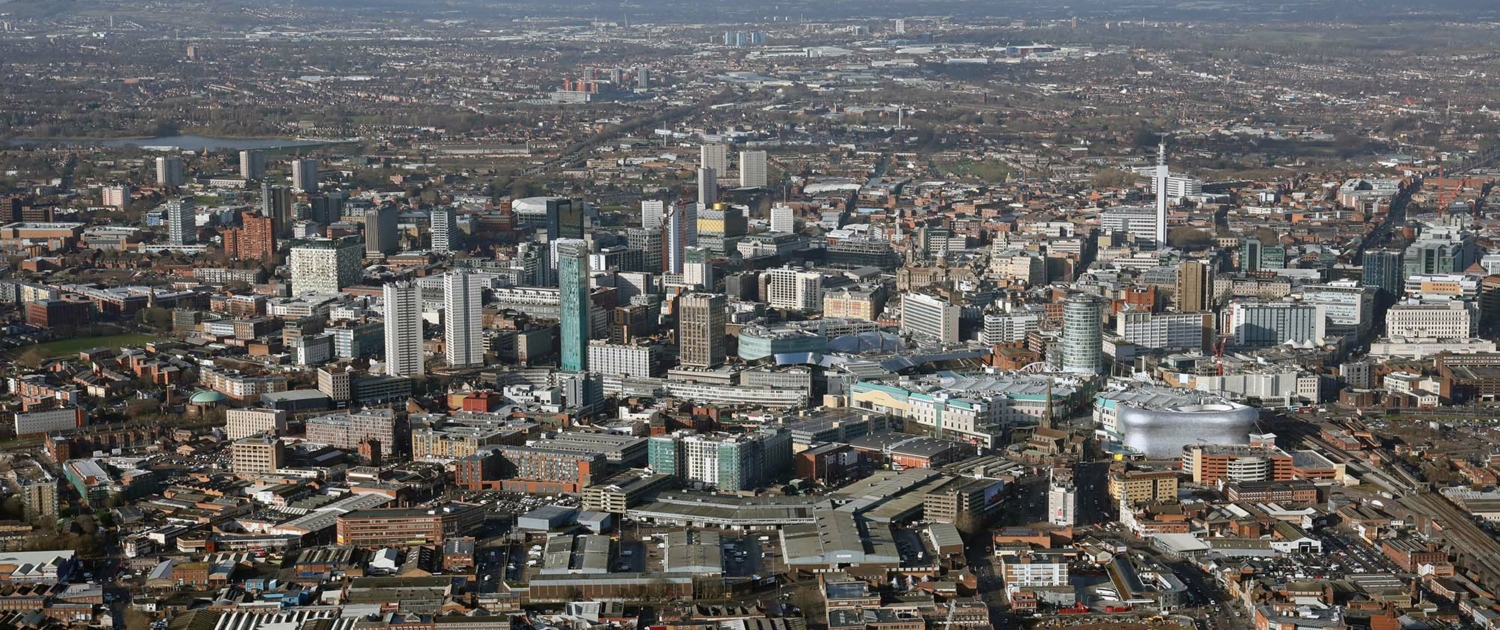Home > Geotopics > Birmingham > What challenges have been created by changes in Birmingham?
What challenges have been created by changes in Birmingham?
Which areas of Birmingham have experienced decline and why?
Birmingham’s inner city areas have experienced the most decline in terms of economic and population decline. From 1951 to 1971, the inner city of Birmingham saw a drop of over 500,000 inhabitants. The driving forces behind this downturn were slum clearance, redevelopment plans, transportation issues, and job losses.
Slum clearance and redevelopment schemes
In the 1950s, a significant portion of Birmingham’s inner city was comprised mainly of dilapidated 19th-century terraced houses and courtyards. A considerable number of these homes lacked hot water and internal toilets. More than 70% of this housing was declared unfit for living, and by 1951, the area was populated with numerous small factories contributing to environmental pollution, with scarce green space. The decision was made to revamp the inner city of Birmingham, creating Comprehensive Redevelopment Areas (CDs) (refer to Figure 19). The living conditions were so dire that entire neighbourhoods were demolished and rebuilt from the ground up. The replacements were ‘modern’ apartment tower blocks equipped with central heating and all other contemporary conveniences. The redevelopment plans also intended to create more open green spaces.
However, these transformations led to a mass exodus of residents to suburban estates on the city’s periphery, and the population in the inner city areas declined as few chose to return post-redevelopment.
Transport
Creating an inner ring road was integral as part of Birmingham’s central redevelopment initiative in the 1970s. This construction project necessitated the demolition of older factories, warehouses, and residences. Some factories were permanently shut down, while others relocated outside Birmingham. Enhancing transportation links also enabled workers to live greater distances from their workplaces.
Job losses
De-industrialisation, a consequence of small, inefficient, and overcrowded factories floundering in Birmingham’s inner city and subsequent job losses, contributed to the city’s regression. Birmingham suffered a loss of 50,000 jobs between 1961 and 1971. There is an ongoing debate among some authors as to whether the factory shutdowns and job losses were a reason for people departing from inner city areas or an outcome of a process already in motion. It appears evident that both factors played a role.
Economic Decline
The UK has been facing a reduction in manufacturing sector jobs since the 1960s, with the most substantial decline observed in inner city regions like Birmingham. In 1948, manufacturing constituted 48% of the UK economy, but this figure dropped to 12% by 2010. The contraction of manufacturing has led to massive job losses, and the emergence and growth of secondary and tertiary industries often offer only low-paying part-time jobs as replacements.
Factors contributing to the economic decline of Birmingham’s inner city include:
- Insufficient room for expansion.
- Deteriorating and outdated structures.
- Derelict and unappealing environments, leading new businesses to favour the rural-urban fringe over the inner city.
- A congested road network, ill-equipped for modern vehicular traffic.
- An abundance of ageing 19th-century metalworking industries reflects a national downward trend.
- Global competition is causing Birmingham’s traditional industries to suffer due to less expensive imports.
- Factory closures and rising unemployment rates resulted in fewer customers for local shops, leading to their eventual closure as trade diminished.
Decentralisation, e-commerce and transport developments
The process of decentralisation in Birmingham started when stores and shopping centres began emerging in the city’s suburbs or rural-urban fringe regions like the Black Country. Starting in 1984, the Merry Hill centre was developed in Dudley, on the site of an old steel works. Located 10 km west of Birmingham, it was once Europe’s largest indoor shopping centre, boasting 260 stores, including renowned brands like Marks and Spencer and Debenhams. This centre drew shoppers away from Birmingham’s central business district, prompting city centre shops to close and relocate. The rise of online shopping instigated a further wave of decentralisation, as an increasing number of people owned computers and found online shopping convenient.
In response to this shift, Birmingham embarked on a significant redevelopment of its city centre shopping, particularly the Bull Ring. By 2003, a major new centre was established, anchored by the Selfridges store. This significant initiative successfully attracted shops and shoppers back to Birmingham’s city centre, partly due to the provision of parking space for 3000 cars nearby.
In recent developments, the New Street railway station underwent a complete rebuild (reopened in September 2015), transforming into a significant transport, shopping, and community hub. It will be linked to a large shopping mall anchored by John Lewis.
Related Topics
Use the images below to explore related GeoTopics.



